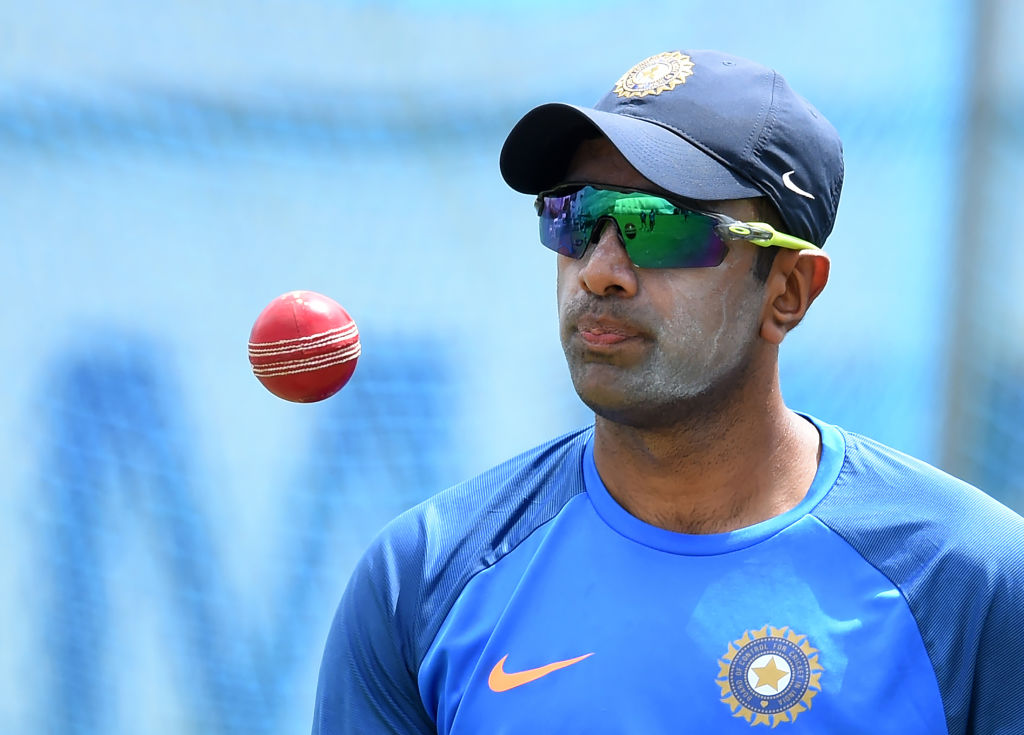

Controversial Indian spinner Ravichandran Ashwin debuted a new bowling action overnight against New Zealand, causing controversy as the umpires made attempts to address it.
Ashwin’s new technique, as the Black Caps piled on the runs in their first innings, saw him bowling around the wicket on a diagonal run-up.
This took him in front of the umpire, but more importantly, in front of the non-striker, causing an obstruction to his running path at best.
It’s important to note that, while Ashwin didn’t enter the danger zone on the wicket with his follow-through, or bowl a no-ball by way of having his front foot in delivery stride past the middle stump, he most certainly did cause obstruction.
Ashwin ended up well outside the batsman’s running line, however, crossed over directly after the ball had been played by the on-strike batsman. It created a situation where a collision could have been, at times, unavoidable.
It appead that, after multiple conversations between umpires Nitin Menon and Virender Sharma with both Ashwin and Indian stand-in captain Ajinkya Rahane, a warning may have been handed to Ashwin, who then went back to bowling over the wicket.
Under the laws of cricket, obstruction with either batsman may be penalisable by penalty runs if that obstruction after the ball has been played.
In this case, it was fairly obvious that the obstruction from Ashwin was just that - after the ball had been played, with the timing of him crossing in front of the batsman being in line with that of the ball running away from the pitch, and, if runs were to be scored, at the same time as the non-striker would be taking off.
While the commentators disputed that the only problem may have been the umpire’s view of proceedings being obstructed, a closer look at the laws of cricket that’s not all it was - or at the very least should have been.
Under law 41.5, “deliberate distraction, deception or obstruction of batter”, it clearly states out what constitutes an obstruction of either batsman - not just the striker in this case.
41.5.1: In addition to 41.4, it is unfair for any fielder wilfully to attempt, by word or action, to distract, deceive or obstruct either batter after the striker has received the ball.
41.5.2: It is for either one of the umpires to decide whether any distraction, deception or obstruction is wilful or not.

India will play three Tests, five one-day internationals and a Twenty20 game in Sri Lanka. The first Test starts on July 26 in Galle. / AFP PHOTO / ISHARA S. KODIKARA (Photo credit should read ISHARA S. KODIKARA/AFP/Getty Images)
If that is to occur, then the fielding team are to be issued a single warning which applies for the remainder of the innings, to the entire team for that action.
Even if that wasn't to be viewed by the umpires, law 41.2 allows for penalty runs in the event that anything is unfair but isn't covered by the laws.
The bottom line is that Ashwin was behaving out of the spirit of the game in running across the wicket, even if he wasn't actively bowling no balls.
He was very clearly obstructing the non-striker, and it could have even been argued the striker too as he ran behind the path of the ball in flight.
Ashwin has a somewhat colourful history when it comes to on-field spirit of the game issues, and this will be just the latest in the long line.
From the mankad incidents, to taking extra runs after the ball has deflected off one of the batsmen, Ashwin has often earnt the ire of fans and commentators of the sport.
It’s evident his follow-through was completely and utterly against the laws of the game, and that it seemingly took the umpires a number of balls to officially warn Ashwin and captain Rahane was concerning to say the least.
While the threat of penalty runs eventually forced him back over the wicket (we think - he may not have been warned, we don't know for sure), it was, at best, out of the spirit of the game, and at worst, should have been warned far quicker and penalised with penalty runs.
Whether the laws need a specific adjustment to cover issues in the follow-through is up for debate, however, the current laws are clear as the blue sky on a summer’s day - Ashwin wasn’t allowed to do what he did, should have been warned far sooner, and India should have been hit with penalty runs by the time he was told to stop his action.





